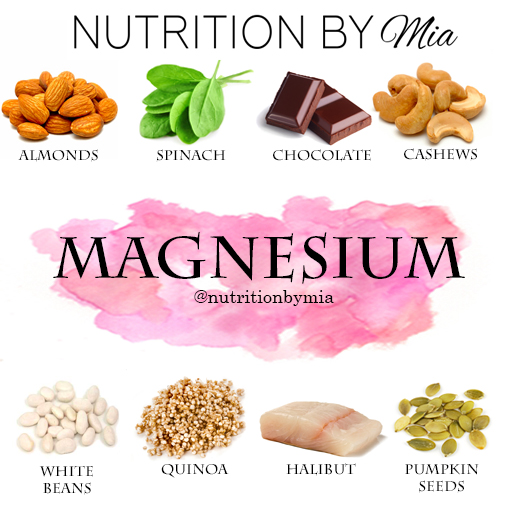
Magnesium is one of the most abundant minerals in the body and needed for more than 300 biochemical reactions. Foods contain small to moderate amounts, which may be why the average American diet fails to contain an adequate supply. Recognizing significant food sources and its roles in the body can help ensure optimum nutritional status.
Roles of Magnesium:
Cellular energy metabolism: All three macronutrients require magnesium for metabolism through either the form of ATP (energy of our cells) or stabilization of enzymes active in the metabolic pathway. Many of these reactions require magnesium as a co-factor for energy production to occur. Because of its prevalent role, signs of fatigue may indicate low levels.
Nervous system and heart health: Magnesium plays a role in ion transport systems and therefore affects conduction of nerve impulses, muscle contraction and maintaining a normal heart rhythm.
Maintaining bone integrity: About half of our magnesium is stored in bone. Research suggests that even mild magnesium deficiency can lead to bone loss because of its link to parathyroid hormone leading to reduced calcium absorption.
Antioxidant role and DNA synthesis: Magnesium is needed for many steps during DNA, RNA and protein synthesis. It is also a key component of glutathione, one of our body’s most important antioxidants.
Food sources:
Green leafy vegetables, nuts, seeds and legumes are some of the best sources of magnesium.
How much do you need:
Females aged 19-30 need 310 mg/day which increases to 320 after age 30. Males aged 19 to 30 years need 400 mg/day which increases to 420 mg after age 30.
Other nutrients affect magnesium absorption
Fibers from fruits, vegetables and grains as well as antinutrient phytic acid can inversely affect how much magnesium is absorbed. However the effect is minimal. Additionally, magnesium absorption is lowered when protein intake is less than 30 g/d.












